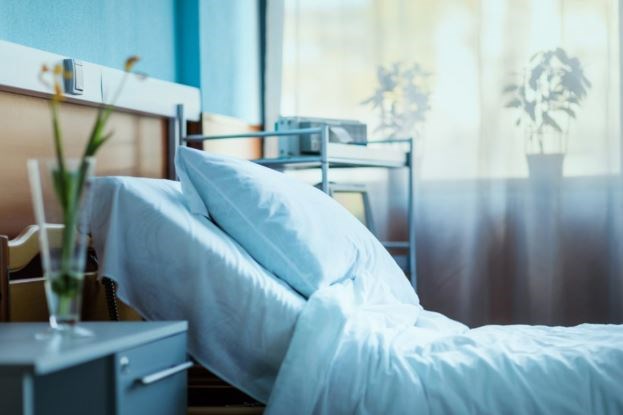Survey details ‘horrific’ conditions in Ontario long-term care homes
Posted: December 19, 2020
(December 18, 2020)
By: Doug Diaczuk, tbnewswatch.com
A survey by the Ontario Health Coalition of staff in long-term care facilities experiencing an outbreak of COVID-19, including one in Thunder Bay, details how staffing shortages are resulting in horrific conditions inside.
THUNDER BAY – From empty hallways, inadequate personal protective equipment, to a lack of cleaning, staff in long-term care homes across the province experiencing outbreaks of COVID-19, including Southbridge Roseview Manor in Thunder Bay, are sharing what conditions are like inside.
“The situation in Roseview is very concerning,” said Andy Savela, director for health care with Unifor. “I know the cases are starting to decrease, thank god, but certainly it’s as horrific as anything described by the military we are talking about today.”
On Friday, the Ontario Health Coalition released results of a survey conducted from mid-November to December 2020 of staff members in long-term care homes experiencing an outbreak of COVID-19 with more than 10 residents or staff infected.
Results were collected from homes in Beeton, Brampton, Hamilton, Mississauga, Ottawa, Scarborough, Thunder Bay, Toronto, and Windsor-Essex.
Southbridge Roseview declared an outbreak of COVID-19 on Nov. 18, which grew to 46 residents infected and 26 staff and resulted in 12 resident deaths. The numbers have since declined and as of Friday, there are 10 active resident cases in the facility and 10 active staff cases.
Family of a resident at Roseview recently spoke out about inadequacies in care at Roseview after a woman was given the wrong medication, while also raising concerns about how the pandemic has impacted care for residents.
A spokesperson with Southbridge refuted claims that residents are not receiving proper or adequate care.
The Ontario Health Coalition received 88 completed surveys from dozens of facilities across the province ranging in size from 55 beds to 540 beds.
According to results of the survey, 64.6 per cent of respondents said there is not enough staffing to provide daily hands-on care to residents during an outbreak.
“In describing how short-staffed they are, many staff report extraordinary workloads, many report working frequent double shifts, significant over-time requirements, staff unable to take their days off sometimes for weeks at a time, staff unable to take breaks,” the report reads.
Some of those who responded said there was adequate staffing with agency staff, but these individuals do not have the proper training to care for residents in the same way as personal support workers.
The survey asked if staff had adequate access to proper PPE, including an N95 mask when caring for residents who have tested positive for COVID-19.
A majority said there was adequate PPE, with the exception of N95 masks, though a third of those who responded said there is not enough PPE.
“This is alarming and unacceptable. In some homes, staff are still reporting being discouraged from using N95 masks,” the report reads. “Some who are provided N95 masks, report that it is conditional- they are told N95 masks are only needed if they are with COVID-19 positive residents while aerosol generating procedures are being done, if the resident is on high flow oxygen or nebulizer treatments.”
The survey also found 79 per cent of respondents saying residents who have tested positive for COVID-19 are separated from others who have not, though 37 per cent responded that there is not enough staff to keep residents from wandering in COVID-19 hotspot areas.
In some cases doors are locked, barriers are set up, or wheelchairs and walkers have been taken away from residents.
“There shouldn’t be a situation where you leave the residents in bed all day because there is a critical staffing shortage,” said Natalie Mehra, executive director of the Ontario Health Coalition. “I find this unbelievable at this point in the pandemic.”
Those who participated in the survey also shared comments and observations about experiences in long-term care homes during an outbreak.
“The stories that are coming out of them are frankly absolutely horrific,” Savela said. “Not just through the survey, but talking to our staff in these surveys and we have talked to a lot of families who share these concerns. They describe a scene inside a facility that can only be described as absolutely horrific.”
Stories include staff working 12 to 14 hour days with no breaks, no housekeeping staff to properly disinfect areas, and not having enough time to properly feed or wash residents.
“Residents are left, because of a lack of staffing, not for a lack of trying, unattended, unfed, the requirements for their personal care and health care is because there is no staff there to provide care,” Savela said.
Earlier this week, the Ford government announced it will commit $1.9 billion in funding annually by 2024-2025 to add more than 27,000 new long-term care positions and instituting a minimum four-hour care standard per resident.
But the Ontario Health Coalition and unions representing long-term care staff say both residents and staff cannot wait another four years for actions to be taken.
“That is unacceptable to us,” Savela said. “The Ford government needs to act now and implement those standards immediately.”
“All they’ve done is offered some temporary pay to try to keep people motivated to come to work. But it’s not about a $3 premium. It’s having adequate staff and knowing they have a team to do the job right. We are calling on the government now to put the resources in.”
There are currently 626 long-term care homes in Ontario experiencing an outbreak of COVID-19. To date, 9,538 residents have been infected and 2,446 people have died.
“We are hearing from our members. They are very difficult conversations to hear as they describe these types of conditions they are working in,” Savela said. “You can hear the angst in their voice. They are very emotional. They are worried for not only their safety but the safety of their residents.”
Click here for original article



